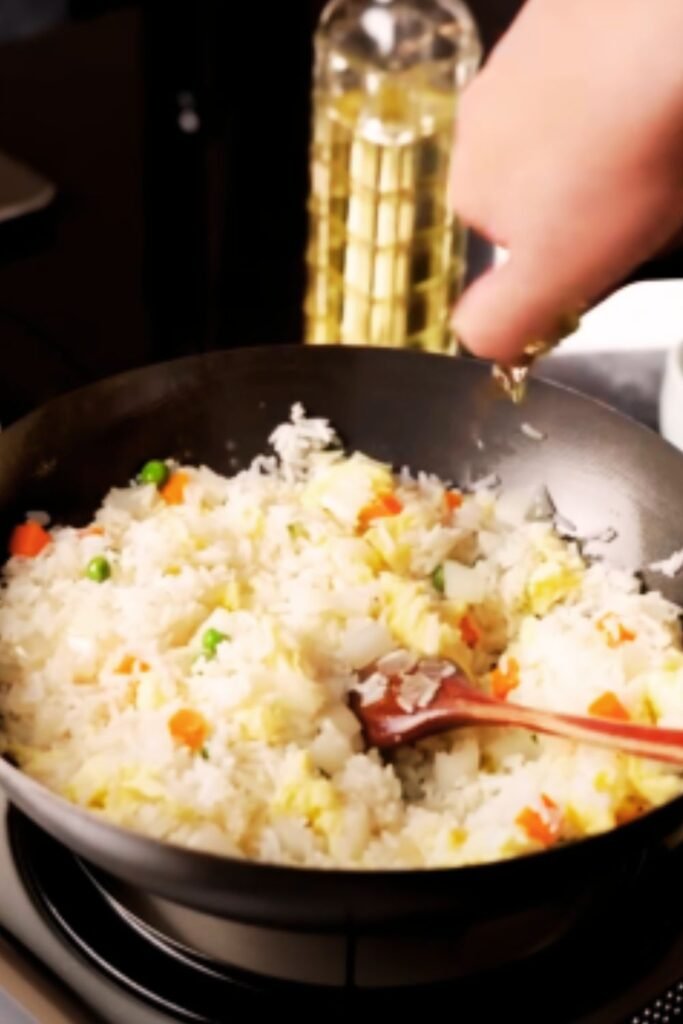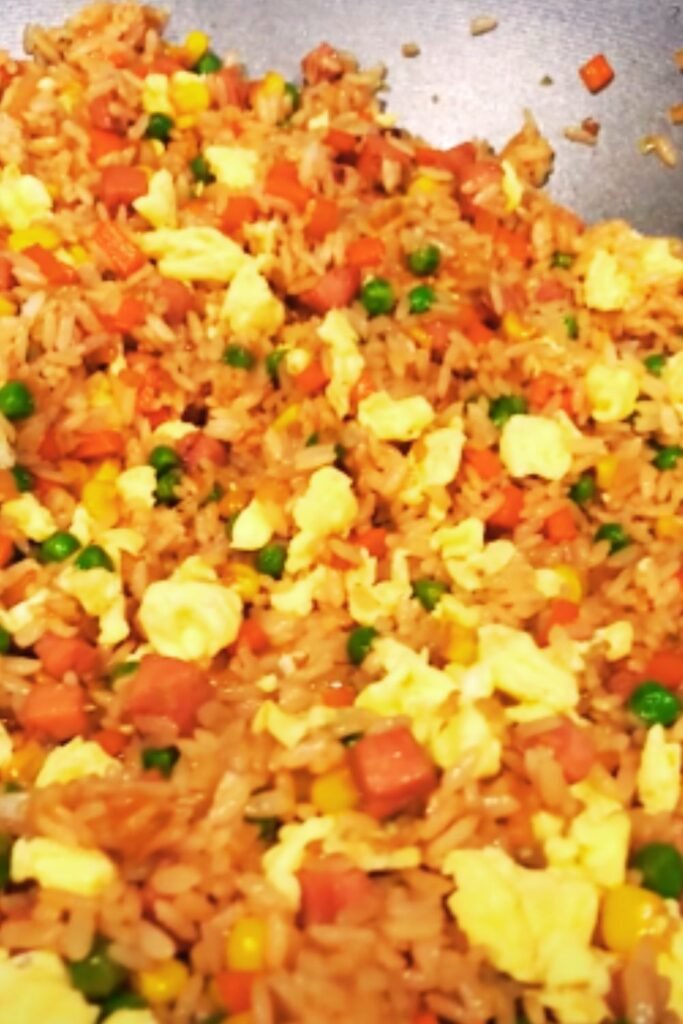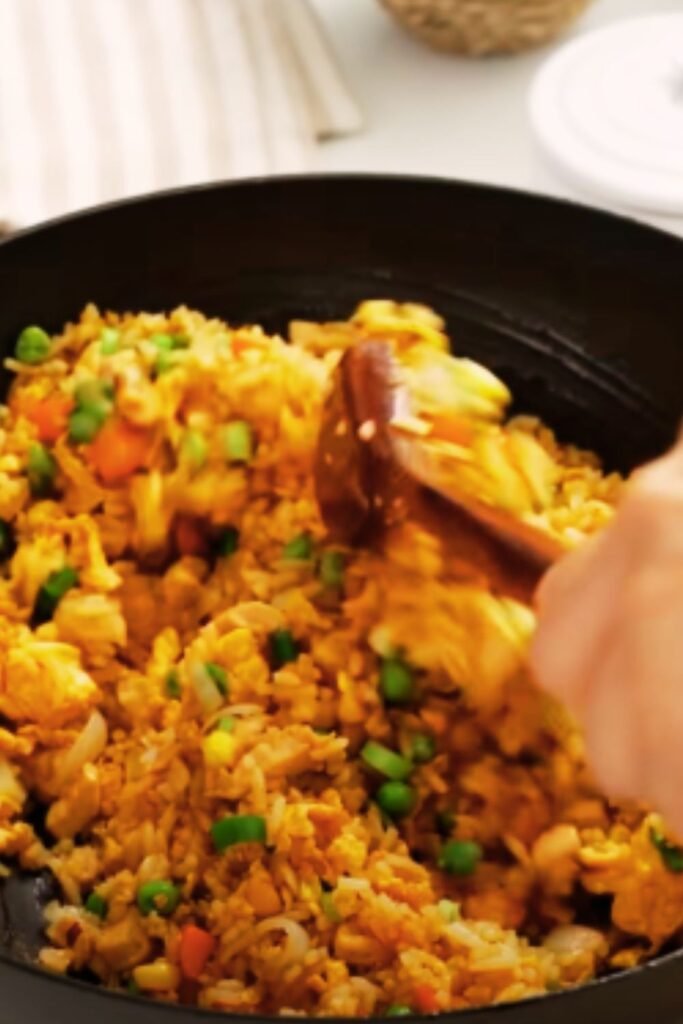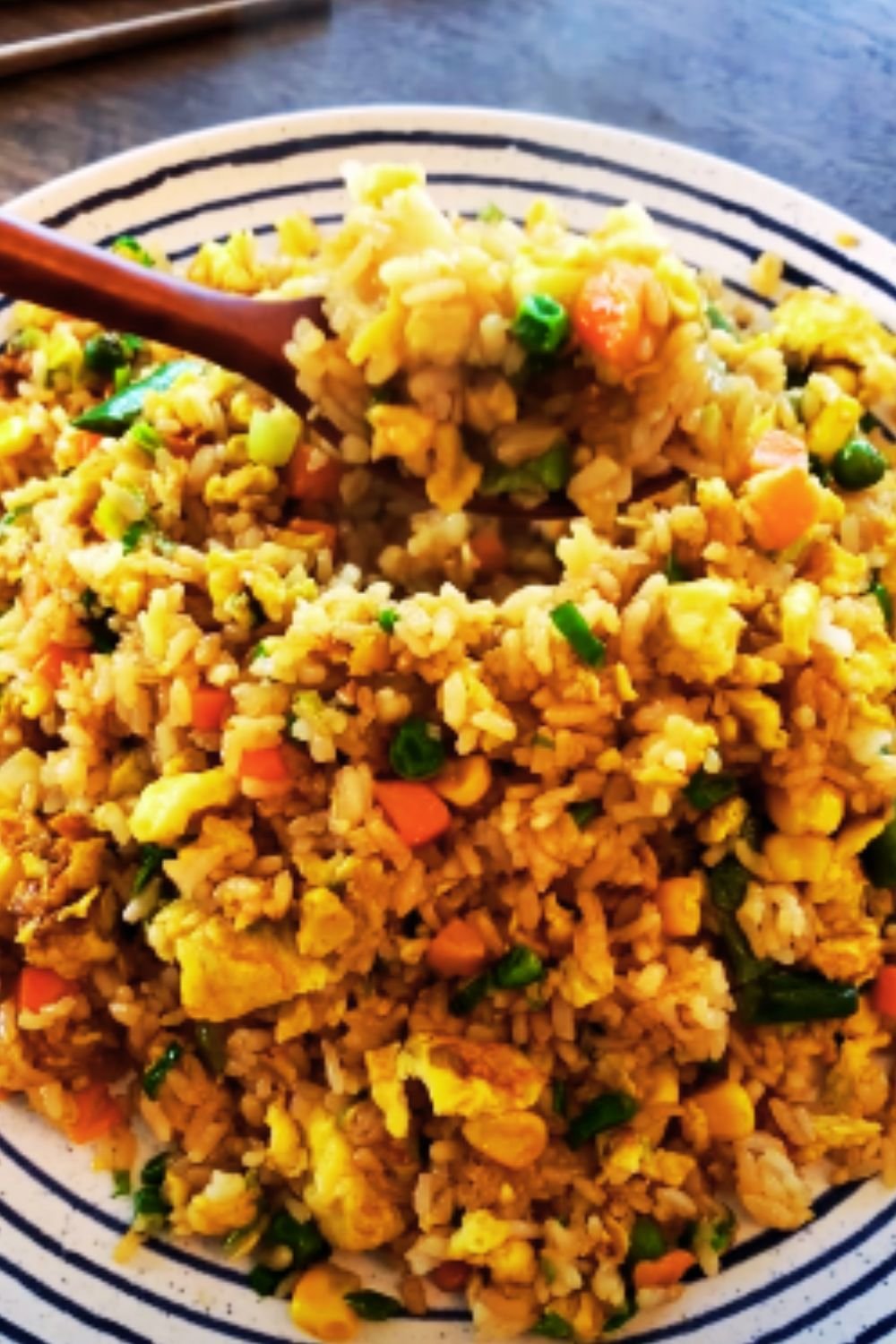Have you ever wondered why restaurant fried rice tastes so much better than homemade? After years of experimenting in my kitchen and learning from professional chefs, I’ve finally cracked the code to creating restaurant-quality fried rice at home. Today, I’m sharing my foolproof method that will have your family asking for seconds and forgetting all about takeout.
The Secret to Perfect Fried Rice
The journey to mastering fried rice began in my tiny apartment kitchen, where countless batches ended up too mushy or lacking that coveted “wok hei” – the distinctive smoky flavor you get from high-heat wok cooking. Through trial and error, I discovered that creating perfect fried rice isn’t just about the ingredients; it’s about understanding the science behind the cooking process.

Essential Ingredients
| Ingredient | Amount | Notes |
|---|---|---|
| Day-old rice | 4 cups | Long-grain jasmine rice works best |
| Eggs | 2 large | Room temperature |
| Carrots | 1/2 cup | Diced into 1/4 inch cubes |
| Frozen peas | 1/2 cup | Thawed |
| Green onions | 4 stalks | Finely chopped |
| Garlic | 3 cloves | Minced |
| Ginger | 1 tablespoon | Freshly grated |
| Soy sauce | 2-3 tablespoons | Use light soy sauce |
| Sesame oil | 1 tablespoon | For finishing |
| Neutral oil | 3 tablespoons | For cooking (vegetable or canola) |
The Science Behind Perfect Fried Rice
Understanding these key principles will elevate your fried rice game:
| Factor | Why It Matters | Pro Tip |
|---|---|---|
| Rice Temperature | Cold rice prevents clumping | Refrigerate rice for at least 6 hours |
| Wok Temperature | Creates proper sear | Heat wok until smoking before adding oil |
| Ingredient Prep | Ensures even cooking | Have everything cut and ready before starting |
| Oil Choice | Affects flavor and smoke point | Use high smoke point neutral oil |
Step-by-Step Process

- Preparation Phase:
- Break up any clumps in your cold rice using your fingers
- Organize all ingredients into prep bowls
- Heat your wok or large skillet until very hot
- Beat eggs with a pinch of salt
- The Cooking Method:
- Add 1 tablespoon oil to hot wok
- Cook beaten eggs until just set, remove and chop
- Add remaining oil
- Stir-fry aromatics (garlic and ginger) for 30 seconds
- Add vegetables, cook until crisp-tender
- Add rice, break up any clumps
- Cook rice until heated through and slightly crispy
- Return eggs to wok
- Season with soy sauce
- Finish with sesame oil and green onions
Troubleshooting Common Issues
| Problem | Cause | Solution |
|---|---|---|
| Mushy Rice | Too much moisture | Use day-old rice, ensure proper heat |
| Bland Taste | Insufficient seasoning | Season in layers, taste as you go |
| Clumpy Rice | Rice too warm or fresh | Use cold rice, break up clumps before cooking |
| Burnt Ingredients | Heat too high | Adjust heat as needed, keep ingredients moving |
Professional Tips for Success

- Rice Selection and Preparation:
- Choose long-grain jasmine rice for best results
- Cook rice with slightly less water than usual
- Spread cooked rice on a baking sheet to cool quickly
- Refrigerate uncovered to dry out surface moisture
- Wok Handling Techniques:
- Use a carbon steel wok if possible
- Maintain high heat throughout cooking
- Keep ingredients moving constantly
- Listen for the “sizzle” – it’s your guide to proper temperature
- Seasoning Secrets:
- Season in layers rather than all at once
- Add soy sauce around the edges of the wok
- Finish with high-quality sesame oil
- Consider adding white pepper for authentic flavor
Serving Suggestions
| Accompaniment | Description | Pairing Notes |
|---|---|---|
| Fresh herbs | Cilantro, Thai basil | Adds freshness |
| Chili oil | Homemade or store-bought | Adds heat |
| Cucumber salad | Quick pickled or fresh | Adds crunch |
| Extra soy sauce | Served on the side | Allows customization |
Storage and Reheating
Store leftover fried rice in an airtight container in the refrigerator for up to 3 days. To reheat:
- Microwave Method:
- Sprinkle water lightly over rice
- Cover with damp paper towel
- Heat in 30-second intervals, stirring between
- Stovetop Method:
- Heat wok or skillet over medium-high heat
- Add a small amount of oil
- Stir-fry until heated through
- Add a splash of water if needed
Frequently Asked Questions
Q: Can I use fresh rice instead of day-old rice?
While day-old rice is ideal, you can spread freshly cooked rice on a baking sheet and refrigerate for 1-2 hours until completely cool and slightly dried out.
Q: Why does restaurant fried rice taste better than homemade?
Professional kitchens use extremely high heat and well-seasoned woks. You can achieve similar results by preheating your wok properly and using the right techniques.
Q: Can I make this dish vegetarian?
Absolutely! Skip the eggs and add more vegetables like mushrooms, bok choy, or bean sprouts. Consider adding tofu for protein.
Q: My rice always clumps together. What am I doing wrong?
This usually happens when the rice is too warm or fresh. Make sure to use thoroughly chilled rice and break up any clumps before adding to the wok.
Q: How can I add protein to this dish?
You can add diced chicken, shrimp, or tofu. Cook the protein first, remove from the wok, then add back in at the end of cooking.
Nutrition Information
| Nutrient | Amount per Serving |
|---|---|
| Calories | 320 |
| Protein | 8g |
| Carbohydrates | 52g |
| Fat | 10g |
| Fiber | 3g |
| Sodium | 580mg |
Serving size: 1 cup (240g)
Remember, creating perfect fried rice is a journey. Don’t be discouraged if your first attempt isn’t restaurant-quality. With practice and attention to technique, you’ll soon be making fried rice that truly is better than takeout. The key is to understand the principles, use quality ingredients, and most importantly, enjoy the process of cooking.
Keep experimenting with different ingredients and combinations until you find your perfect version. After all, the best fried rice is the one that makes you and your family happy.


